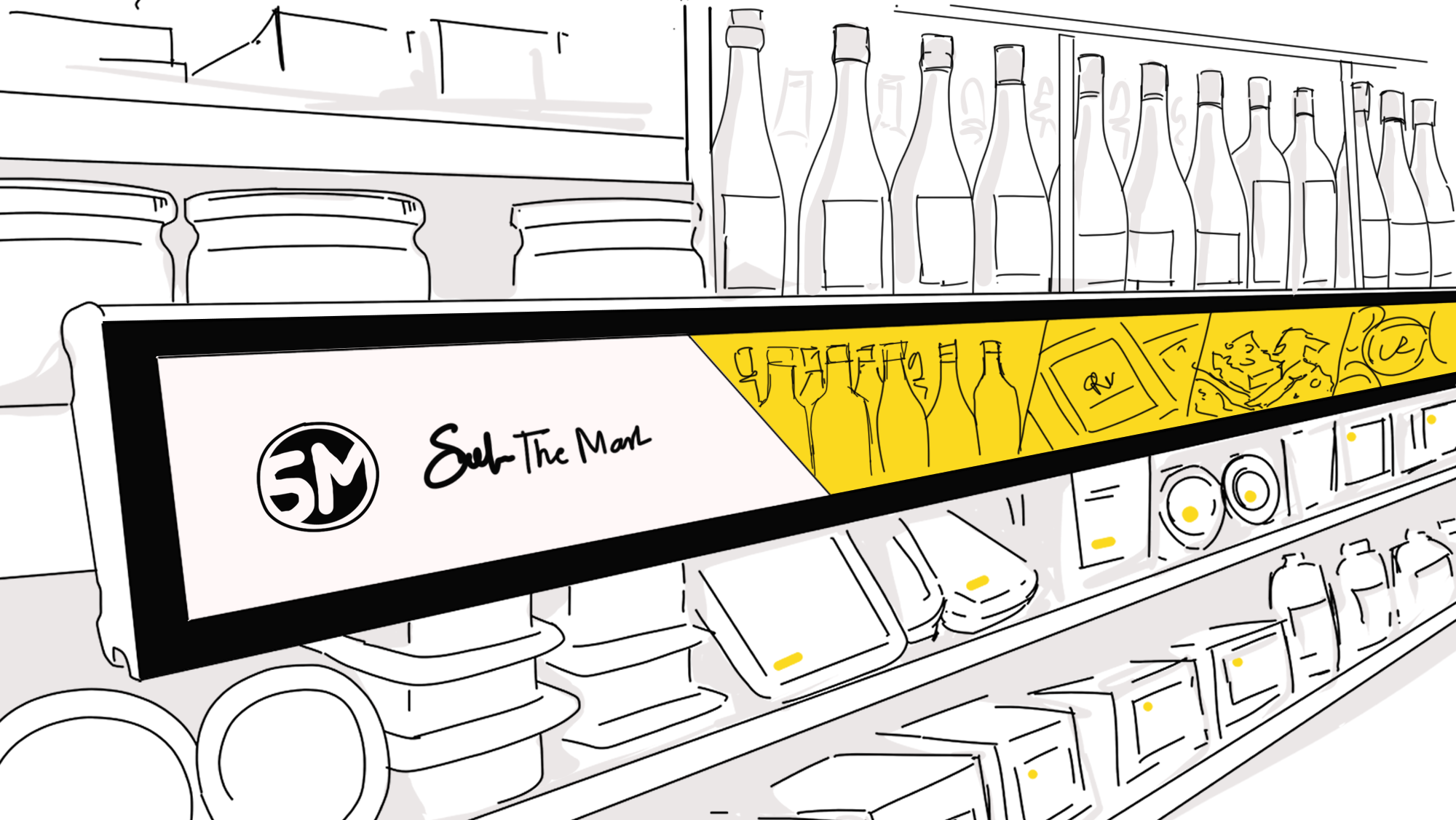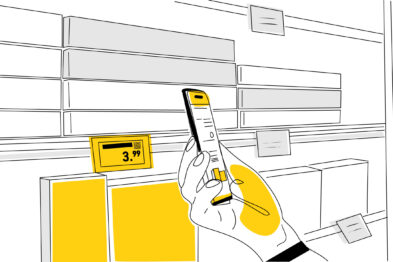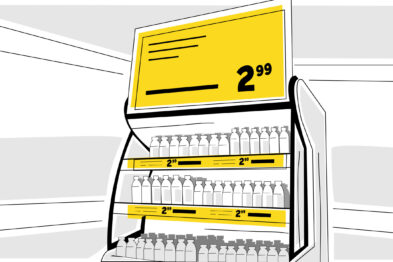5 Emerging Retail Trends That Will Transform Shopping Experiences in 2024
In 2024, shoppers have the luxury of choice. From the sheer selection of products to the retail models, the diversity is such that consumers have no reason not to give in to their preference, refining their criteria to the point that they expect personalization at every turn.
Simply wanting “the best”, looking for affordability without compromising on quality, seeking out sustainability and ethical practices, or prioritizing trust in the brands they follow, consumers are reshaping the retail landscape. Between the uncontrollable rate at which inflation progresses, the unpredictable economic downturn, the environmental crisis, and countless other factors, their needs and perspectives are poised to keep evolving.
The only way for retailers to gain a competitive advantage amid all the uncertainty is to embrace innovation and explore new paths for bringing consumers what they want. From AI-enhanced digital price tags to hybrid shopping, sustainable shopping options, and highly personalized experiences, let’s take a deep dive into the retail trends shaping the future of online and in-person shopping.
1. Integrating AI for Personalized Shopping
The rise of Artificial Intelligence (AI) is affecting the retail industry at its core. Far from constituting a passing retail trend, integrated AI is already a major component of retail advertising. What sets it aside from every other method typically employed to understand consumers and deliver more streamlined experiences is the high level of personalization it offers, along with real-time capabilities. In other words, AI algorithms can analyze immense amounts of consumer data in a few seconds. From this, the system makes decisions on the fly to bring every shopper an experience that is uniquely their own.
How does it work? It all relies on a feedback loop that begins with data collection. In-store, this can happen when shoppers scan a loyalty card that automatically records their purchases or — if the technology is there — through a set of sensors that record the customers’ behavior as they move from one aisle to the next, lingering to look at products, picking up some to replace them on the shelf, putting items into their cart, etc. The AI-enabled system then analyzes the information and cross-references it with customer data collected from e-commerce sites, social media, and other marketing channels. The goal is to understand the shoppers’ preferences, predict their behavior, and tailor promotions and product recommendations. The customer’s reaction to these individually generated suggestions creates more data, and the cycle goes on, offering increasingly accurate results.
Although AI for personalized shopping counts as one of the most promising retail trends, its generalization will be very gradual. At this stage, retail giants are implementing AI-powered technologies at every turn, while smaller companies tend to adopt them in stages, offsetting their costs in the longer term.
Engage, part of VusionGroup’s Retail Marketing solutions, is designed to accommodate the needs of every retailer and grow along with them to build shopping environments that continue to meet consumer expectations.
2. The Rise of Omnichannel Retailing
Just as AI technology is unifying customer experiences through connected digital systems to offer highly targeted services, omnichannel focuses on integrating multiple touchpoints to provide shoppers with a seamless experience across channels. Going much further than cross-channel approaches, where customers were expected to interact with several points of sale in parallel, omnichannel retailing adds extra value by creating an environment that is greater than the sum of its parts.
A concrete example of this retail trend could be a shopper placing an order on an e-commerce website for a new pair of shoes. Once the order is confirmed, they have several choices to retrieve the item: same-day delivery at home or to a different address, 2-day shipping, or pick-up options (curb-side or in-store). Thanks to omnichannel retailing, stores enjoy unified inventory capabilities, allowing them to optimize product availability based on the customer’s choice. The purchase adds points to the customer’s free loyalty program, which gives them coupons and deals to use online or in-store. This means the shopper could decide to browse the physical store as they pick up their previous order and use their new points there. All their purchases appear in one convenient place, no tickets necessary, on the retailer’s app. From there, the shopper can also update their personal information, check their point balance, play games to unlock new promotions, etc.
Satellite retail trends such as self-service enablement platforms, interactive retail media, social commerce with a more flexible architecture, and personalized marketing techniques make omnichannel tactics possible. This interconnection allows the transition between channels to be seamless, enhancing the customer experience and reinforcing the connection between shoppers and brands.
3. Sustainability and Ethical Retailing
Consumers are increasingly conscious of the ethical and environmental impact their purchases generate, creating retail trends that focus on sustainability. Brands and stores are embracing this move to support more responsible practices, from material sourcing to supply chain and product packaging.
Legislators are on board with the changes as well, further fueling shopper resolve. From energy efficiency labels to digital product passports providing information about the traceability of apparel, electronics, and other controversial items, companies now need to submit to greater scrutiny than ever before. Transparency is expected at every stage of the production process, and consumers demand to know the brands they choose to trust inside and out. In this digital era, where understanding the customer is at the heart of most retail strategies, this sounds like a sensible thing to ask for. Those who don’t play fair are bound to see their sales dwindle as traceability software becomes the norm and other actors compete to raise their sustainability standards.
Environment-oriented retail trends also mean marketers must make informed decisions at every level of a product’s lifecycle. From the early stages of product development to how it can be repurposed, recycled, or responsibly disposed of at the very end of the journey, brands must rationalize their decisions. This is because transparency is there to offer a window into what consumers truly want to know: how much effort is being made toward more conscious practices? The expectation is for brands to optimize forecasting, minimize overstock, and reduce their environmental and social footprint to offer eco-friendly products that empower consumers to make a positive change in the world.
In other words, sustainability is not one of those retail trends that fall into oblivion a couple of years after they were all the rage. It’s here to stay, and retailers will be held accountable for their choices.
4. The Emergence of Retail-as-a-Service (RaaS)
Retail trends are encouraging innovative services and spurring traditional stores to reinvent themselves if they wish to stay relevant. In essence, Retail-as-a-Service — also known as RaaS — transforms the classic department store experience into an immersive space where brand experiences transcend the outdated hard-sell approach.
Retailers who have always operated online have reached the limits of their growth via purely digital means. Instead, they look for opportunities to scale their business model into the physical space, reshaping it along the way. In-person shopping is no longer an end in and of itself. Instead, RaaS views it as a chance to invite customers to step into a brand’s universe, listen to its story, and discover its products in a different light. This means fewer products on the shelves and a version of retail storytelling made more compelling by a uniquely designed environment that creates a new frame of reference.
How is this retail trend beneficial? From the consumer’s perspective, the utilitarian nature of brick-and-mortar stores is challenged in a meaningful way. Since the online world provides ample opportunity to procure the products they need, they would rather use their time to experience something that elevates shopping as they know it. Visiting a store is no longer a necessary part of shopping. It’s a perk!
Manufacturers are beginning to recognize the value of these retail trends as well. The model allows them to take full advantage of the “pop-up mentality”. In this paradigm, consumers are excited to be part of more transient events, more special by definition. It lets manufacturers interact directly with their customers and gain insights into how consumers are viewing and using their products. This data can then be leveraged to identify improvement possibilities for their products and respond effectively to customer pain points.
5. Leveraging Big Data for Market Insights
If all the retail trends discussed above have one thing in common, it is certainly their reliance upon data. Big data analytics has a major advantage in market research: it captures and analyzes consumer behavior, providing immensely accurate insights into what shoppers want. Anytime a user clicks, likes, shares, or purchases an item online, valuable data is produced. By using advanced analytics, businesses can decode the meaning behind the information and gain a deeper understanding of how consumers make purchasing decisions.
The difference also lies in timing. If big data tops most other retail trends, it’s because it allows market researchers to get the answers they require in real time. In the past, they needed to conduct periodic surveys that were not only time-consuming but potentially outdated before brands could even act on the insights collected. Nowadays, businesses can collect vast amounts of data from different sources, such as social media, online transactions, and customer interactions, and analyze it in concert. This extensive data collection allows companies to gain a comprehensive understanding of their target market and identify significant retail trends and patterns that can be useful for their business growth. And all this happens on the fly. Thanks to cloud-based solutions, for instance, retailers can quickly leverage the data and make proactive decisions.
The solutions that allow you to interpret and utilize big data scale up and down as needed. From the microcosm of a single consumer — whose experience can be infinitely personalized — to the macrocosm of global retail trends, the technology is relevant and serviceable at every level.
Retail trends provide a compass by which brands and retailers can steer their efforts. Keeping an eye on their evolution allows market professionals to stay close to what consumers genuinely want without losing sight of where the industry itself is headed. Big data is at the heart of most of these retail trends, offering objective insights that can be leveraged for precision marketing, customized product development, and supply chain optimization.
VusionGroup’s solutions empower brands and retailers to design and automate powerful strategies that place data, connectivity, personalization, and traceability within an omnichannel context. Through an on-trend yet consistent and coherent approach to in-store communication — thanks to connected digital labels supported by a robust, AI-power infrastructure — store owners can stay ahead while delivering compelling customer experiences.
Get in touch with our experts and join hundreds of retailers as you embrace the technologies that will shape the future of your industry.



